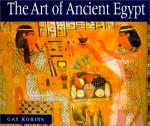|
This section contains 1,320 words (approx. 5 pages at 300 words per page) |

|
Value of Study. Hairstyles help art historians determine the date of works of art because hairstyles change through time. They also reflect the age, status, and sex of the person represented. Egyptologists have studied hairstyles through works of art, wigs found in tombs, and mummies. In ancient Egypt fashions changed slowly during the Old Kingdom (circa 2675-2130 B.C.E.) and Middle Kingdom (circa 1980-1630 B.C.E.). During the New Kingdom (circa 1539-1075 B.C.E.) there was an acceleration in the rate of change in fashion.
Men's Styles. During the Old Kingdom men wore wigs that had thick, straight hair. Wigs reached shoulder length and were sometimes shown swept back over the shoulder. These wigs covered the ear. Other men wore their natural, short-cropped hair. This hairstyle included rows of curls arranged neatly around the head. Old Kingdom men were...
|
This section contains 1,320 words (approx. 5 pages at 300 words per page) |

|




